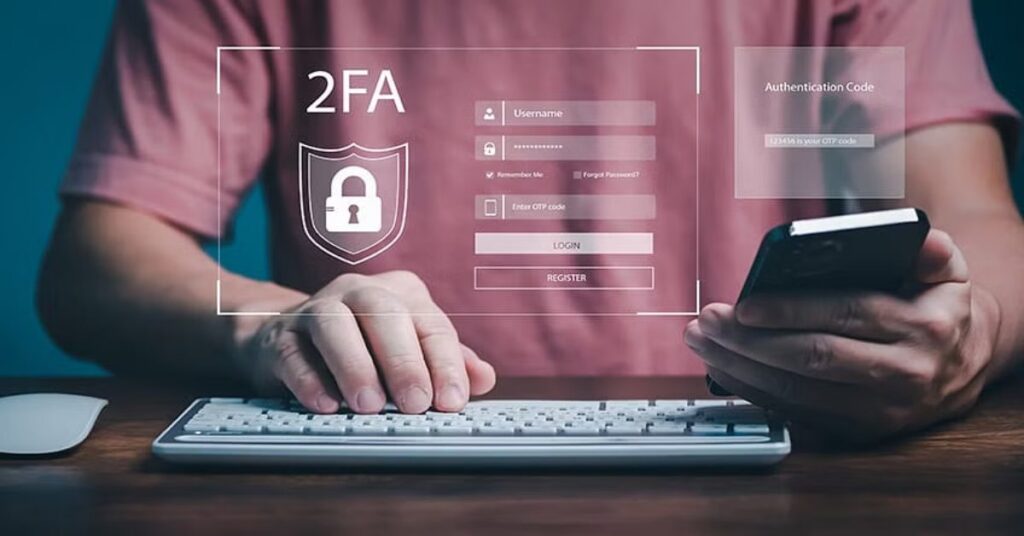In the dynamic digital landscape, Bitcoin stands out as a revolutionary decentralized currency challenging traditional financial norms. As the adoption of cryptocurrencies surges, the imperative to secure digital assets grows exponentially. This article scrutinizes a pivotal facet of Bitcoin security – the role of Two-Factor Authentication (2FA) in fortifying transactions and wallets. To enhance the security of your digital holdings, it is paramount to explore reliable security measures. The exploration of case studies, challenges, and best practices emphasizes the need for a proactive security stance in the ever-evolving digital currency landscape. Prioritizing and implementing 2FA contributes significantly to forging a more resilient and secure environment for the future of finance. Keep yourself updated and keep learning about investing to get the best out of the market.Try IMMEDIATE-FLIK.COM and learn from investment educational experts.
Understanding Two-Factor Authentication (2FA)
Two-Factor Authentication, commonly known as 2FA, is a security process that adds an additional layer of protection beyond a password. In the realm of Bitcoin, where the stakes are high, relying solely on a password for security is inadequate. 2FA typically involves two out of three factors: something you know (password), something you have (device or token), and something you are (biometrics). The combination of these factors significantly enhances the security posture, making it more challenging for unauthorized entities to gain access.
Vulnerabilities in Bitcoin Security
The decentralized and pseudonymous nature of Bitcoin transactions does not make them immune to threats. Common vulnerabilities include phishing attacks, malware, and unauthorized access to wallets. Numerous incidents, such as exchange hacks and wallet breaches, underscore the pressing need for robust security measures in the cryptocurrency space.
How Two-Factor Authentication Works
To comprehend the effectiveness of 2FA, it is essential to understand its inner workings. The first factor, typically a password, is something the user knows. The second factor introduces an additional element that the user possesses, such as a mobile device. Authentication apps, SMS codes, and hardware tokens are common methods for implementing the second factor. This dual-layered approach significantly fortifies the security of Bitcoin transactions, requiring attackers to breach multiple barriers for unauthorized access.
Biometrics, such as fingerprint or facial recognition, serve as a potent second factor, adding a unique physiological aspect to the authentication process. While not yet widespread, the integration of biometrics in 2FA is steadily gaining traction, offering a more secure and user-friendly experience.
Case Studies: Successful Implementation of 2FA
Examining real-world scenarios where 2FA has thwarted unauthorized access provides valuable insights. Notable cases include incidents where phishing attempts were foiled, malware was unable to compromise accounts, and unauthorized login attempts were halted by 2FA measures. These case studies serve as compelling evidence of 2FA’s effectiveness in safeguarding Bitcoin assets.
Lessons gleaned from these cases highlight the pivotal role 2FA plays in preventing unauthorized transactions and fortifying the security of cryptocurrency holdings. The experiences of individuals and organizations that successfully implemented 2FA underscore its practical importance in the face of evolving cyber threats.
Challenges and Criticisms of Two-Factor Authentication
While 2FA is a potent tool in bolstering security, it is not without its challenges and criticisms. Some argue that 2FA could be inconvenient for users, potentially leading to resistance in adoption. Additionally, the reliance on mobile devices for authentication introduces vulnerabilities associated with device loss or theft.
Critics also point out the susceptibility of certain 2FA methods, such as SMS codes, to interception. As technology advances, so do the tactics of malicious actors, necessitating continuous improvements in 2FA measures.
Despite these challenges, ongoing developments in 2FA technology aim to address shortcomings and enhance overall security. It is crucial for users and industry stakeholders to stay informed about these advancements and adapt security measures accordingly.
Best Practices for Implementing Two-Factor Authentication in Bitcoin
For individuals and organizations navigating the complex landscape of Bitcoin security, adopting best practices in implementing 2FA is paramount. Users should prioritize setting up 2FA on their cryptocurrency wallets, opting for more secure methods like authentication apps or hardware tokens over SMS codes.
Cryptocurrency exchanges and platforms play a pivotal role in securing user assets. Implementing robust 2FA measures, coupled with regular security audits, can significantly reduce the risk of unauthorized access. Educating users about the importance of 2FA and providing step-by-step guides for implementation can further enhance overall security.
Conclusion
In conclusion, the importance of Two-Factor Authentication in the realm of Bitcoin cannot be overstated. As the cryptocurrency ecosystem continues to grow, so do the threats it faces. 2FA serves as a crucial line of defense against unauthorized access, adding an additional layer of security that is imperative in safeguarding digital assets.
As users and organizations embrace the potential of Bitcoin, integrating 2FA into security practices becomes non-negotiable. The case studies, challenges, and best practices discussed underscore the need for a proactive approach to security in the ever-evolving landscape of digital currencies. By prioritizing and implementing 2FA, we contribute to creating a more resilient and secure environment for the future of finance.







